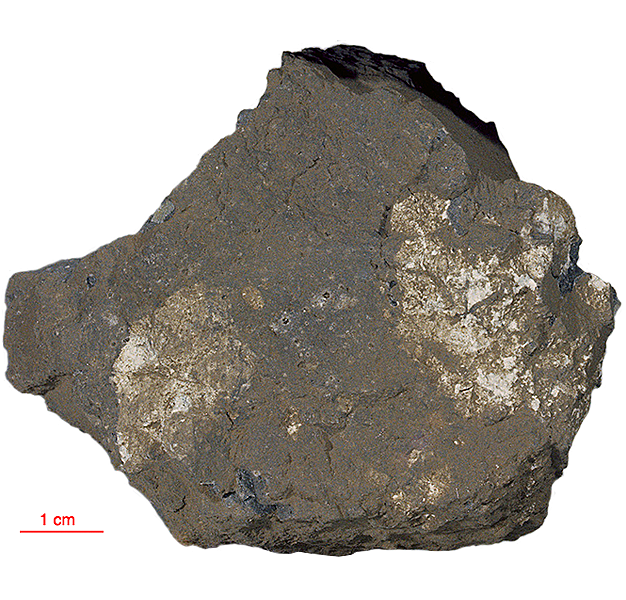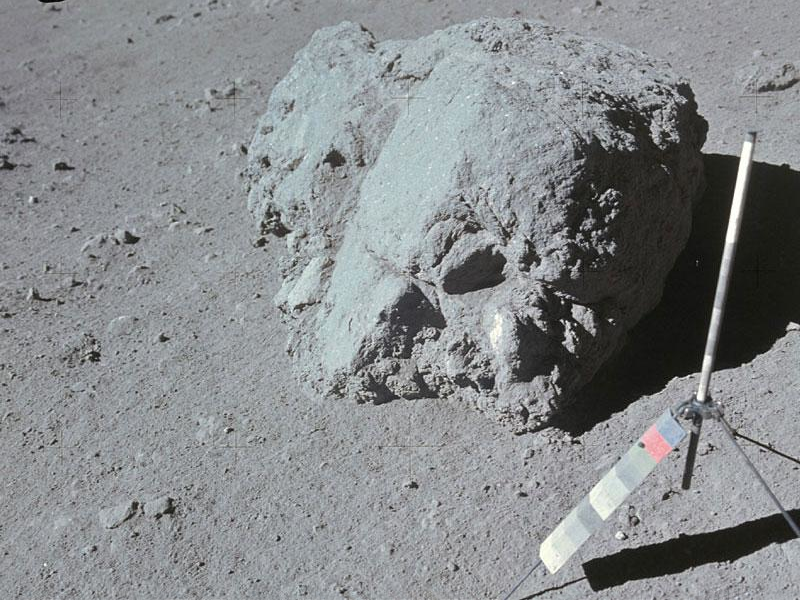
Fact sheet
15445 is a recrystallised impact melt breccia containing several (~10) individual white clasts, the largest being a shocked norite dated at ~ 4.28 - 4.46 b.y. It is an assemblage of magnesian plutonic and metamorphic lithic clasts of deep-seated origin, embedded in a matrix of mineral fragments bonded by a melt phase. The melt phase has recrystallised as a fine-grained matrix of plagioclase, olivine and opaques. Our thin section has two main parts - impact melt lithology (bottom) with a heavily shocked spinel troctolite clast (above). A study of the plagioclase, olivine, orthopyroxene and spinel (rotation 1) enabled a depth of origin of 12 to 32 kilometres to be calculated.
The sample weighed 287.2 grams before analysis. The matrix has been dated at ~3.76±0.09 billion years (Ar/Ar).
Further details of this and other Apollo samples are here: http://curator.jsc.nasa.gov/lunar/
The Apollo 15 landing site was in the Apennine Highlands, and close to Hadley Rille — a long, narrow winding valley. Approximately 76 kg of lunar material, including soil, rock, core-tube and deep-core samples, were returned to Earth.
This mission was the first flight of the Lunar Roving Vehicle which allowed the astronauts to venture further from the Lunar Module than in previous missions. During three periods of extravehicular activity, or EVA, on July 31st, and August 1st and 2nd, Scott and Irwin completed a record 18 hours, 37 minutes of exploration, travelling 17.5 miles, in the first car that humans had ever driven on the Moon.
Apollo 15 was launched on 26 July 1971.







